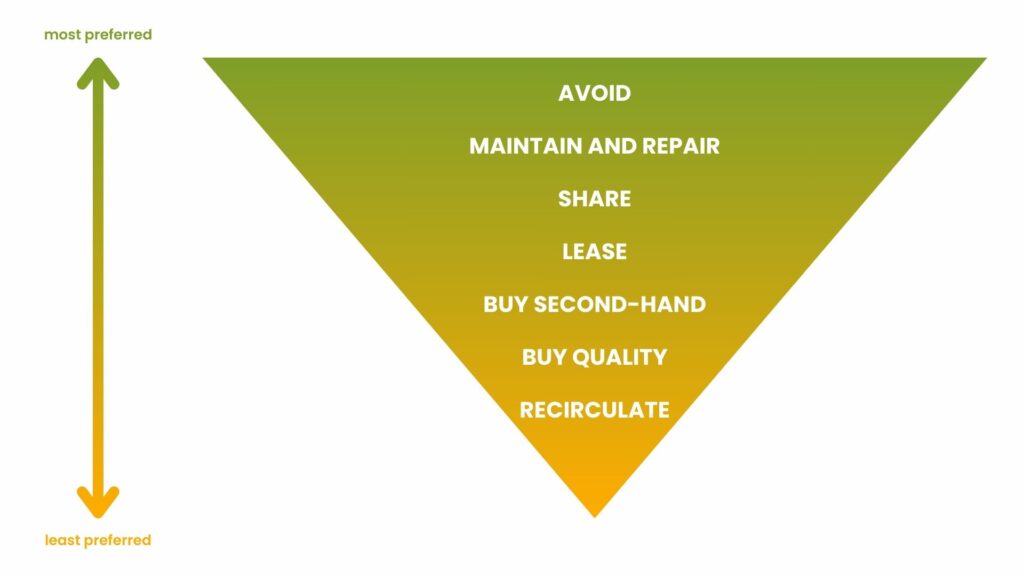
Citizens play a crucial role in the transformation towards a more circular and sustainable fashion industry. To help inspire action, Aalto University has compiled an overview of important citizen engagement initiatives taking place in Europe and beyond — helping to spark a shift in mindset and behaviour towards a more circular way to enjoy fashion.
To help navigate which activities need to be prioritised for a sustainable transition towards circular economy, the waste hierarchy level graphic above can be used as a reference.
Waste hierarchy level: Avoid and recirculate.
The aim of this initiative by the Nordic Textile Collaboration is to engage companies and citizens to collaborate on extending the lifetime of textiles. Circular solutions like repairing, redesigning, reusing, reselling, and renting are discussed in an online format through webinars and workshops. The organisation also aims to support citizens that sign up for a six-month challenge of not buying new clothes but instead rely on circular solutions to fulfil their wardrobe needs. At the same time, organisations can sign up to evaluate circular business models during these six months.

Image: Nordic Textile Collaboration
Waste hierarchy level: Avoid and recirculate.
The Finnish Crafts Association Taito runs a video lecture series on sustainable clothing care. Topics include the environmental impact of clothing, ecological detergents, and garment maintenance and repair. Basic tips for mending and repairing textile items help engage citizens on how they can keep their clothing in use . The aim of the project is to support citizens in responsibly repairing and maintaining clothes, and through that — prolonging the garment use time and reducing textile waste.
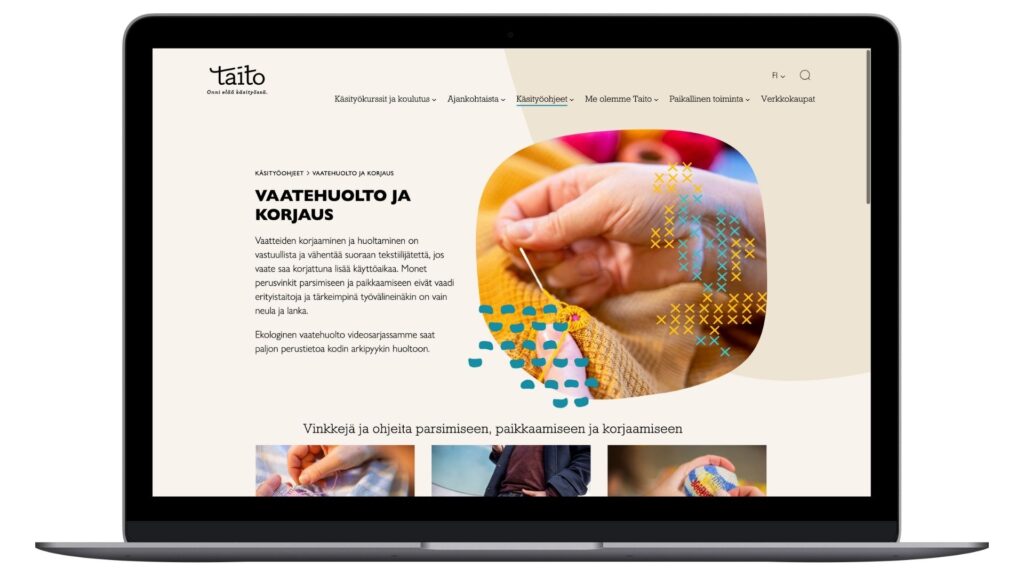
Waste hierarchy level: Repair and maintenance
The FINIX sustainable textile systems research project collaborated with Martat (The Martha Association) to encourage handcraft enthusiasts to extend the life of their clothes and reduce the environmental burden of textiles by sharing garment repair tips via social media. The challenge ran during Spring 2023, with winners announced in June during an exhibition at Aalto University about the project.
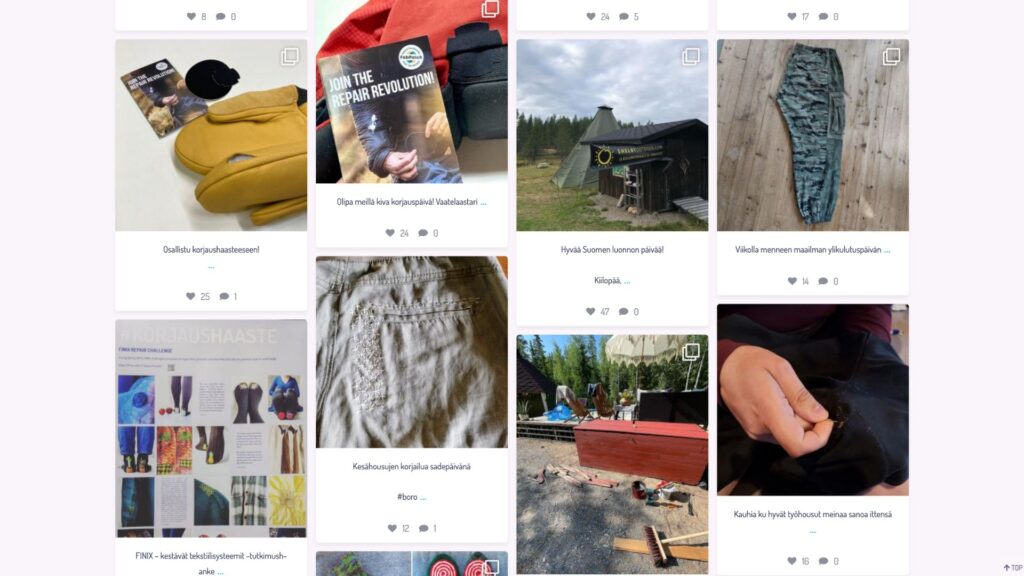
Waste hierarchy level: Avoid, Recirculate (Reuse, recycling)
#RRRR was an engaging digital campaign run by Refashion in France promoting ‘Repair, Reuse, Recycle, and Reduce’ among citizens. The aim was to raise public awareness on the maintenance and use of clothing, linens, and footwear. The campaign brought together hundreds of stakeholders to share the message on digital platforms, social media, and brand websites.

Waste hierarchy level: Avoid, Recirculate (Reuse, recycling)
Race Against Waste organises textile races in different countries, including the Netherlands and France, where school classes in a region compete with old and broken textiles. School children are educated about textile waste and empowered with practical ways to help prevent it, through less consumption, repair, reuse, and proper collection. Each school is given a challenge to collect and repair as many old textiles over the course of four weeks. The community around the schools also has the opportunity to get involved in the textile race, through donating their end-of-use clothing and campaigning to raise awareness of the local races. The goal of this initiative is to raise awareness about sustainable clothing consumption, as well as textile repair and recycling.

Image: Race Against Waste
Waste hierarchy level: Recirculate (Reuse)
This project reinforces the importance of the citizens’ role as agents of change by raising awareness of how to get involved in the city’s commitment to climate neutrality. The name shows the importance of incorporating the “Rs” in a circular economy: Rethink, Redesign, Reuse, Repair, Reduce, Remanufacture, Recycle, Recover, etc. A special event focused on circular textile consumption and included activities for the whole family. Workshops like “Threads with soul,” “Repair and Customise,” or workshops on spinning and colouring were offered, as well as swap markets and exhibitions.
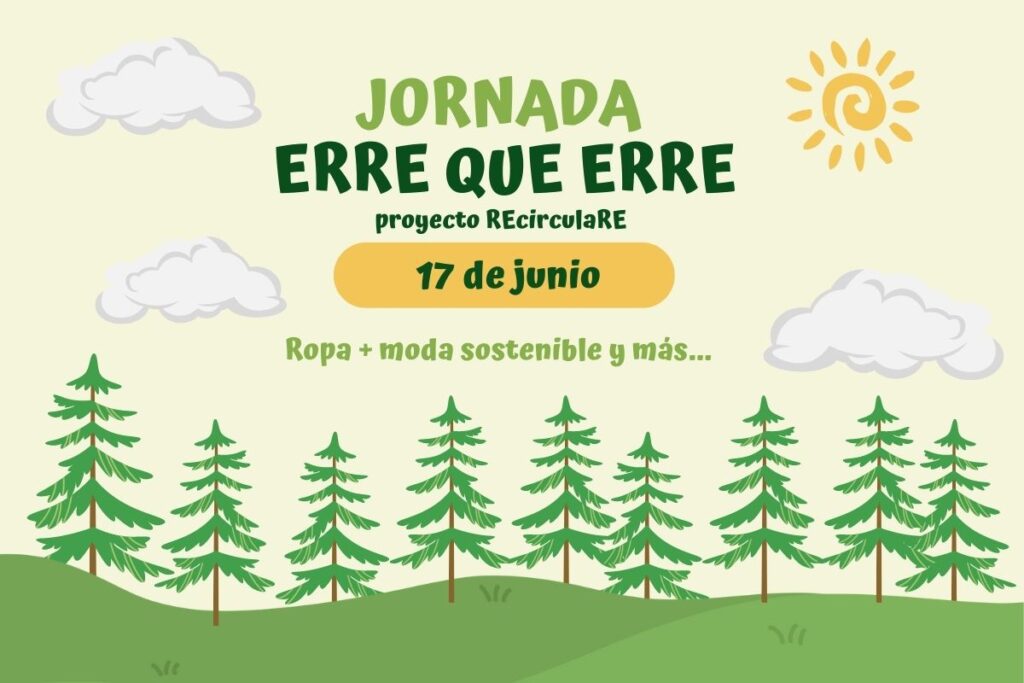
Waste hierarchy level: Avoid, Recirculate (Reuse)
#LovenotLandfill is an awareness campaign in London, UK, initiated by the London Waste and Recycling Board (now ReLondon). It focuses on raising awareness around the topic of textile reuse, especially for young consumers in London. Through student workshops and events in schools and universities, young consumers are encouraged to donate their unwanted clothing to charity, put them in clothing banks, swap, borrow, or buy second hand.
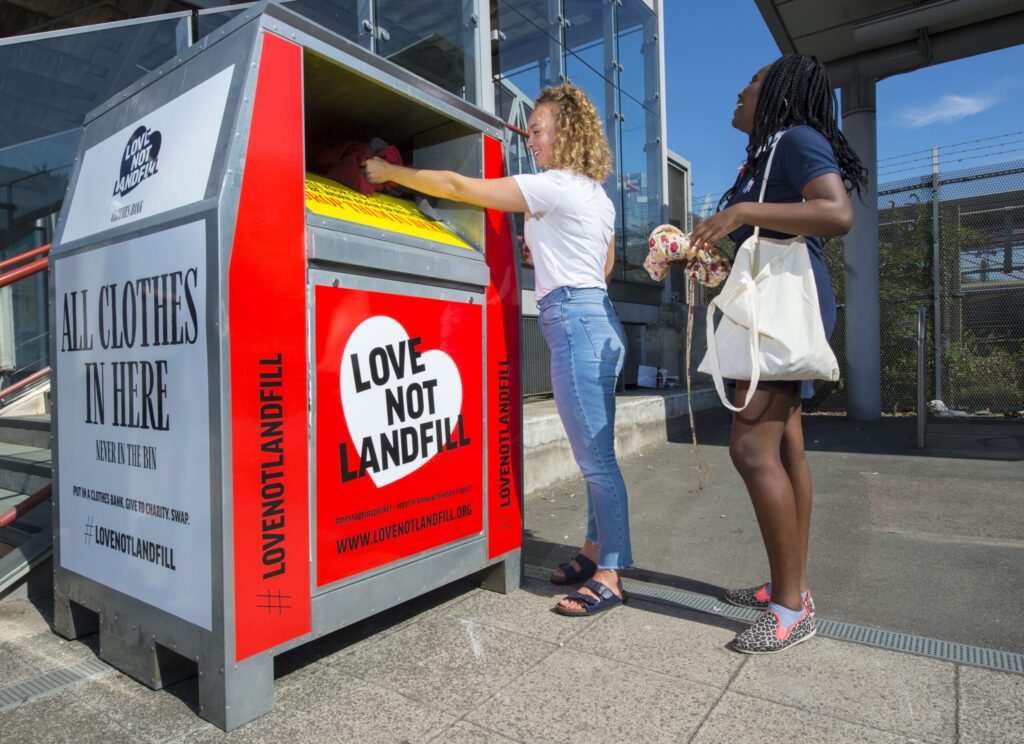
Image: Lucy Young (via Love Not Landfill)
Waste hierarchy level: Recirculate (Reuse, recycling)
In this campaign, the City of Cardiff and Oxfam collaborate to spread awareness regarding upcycling and repairing of clothes. Volunteers and fashion design students collected and upcycled unwanted jeans into cut-off shorts for Oxfam to sell at summer music festivals. They have also started a new campaign, “Recycle now”, to help consumers find recycling points for different clothing and textile items.
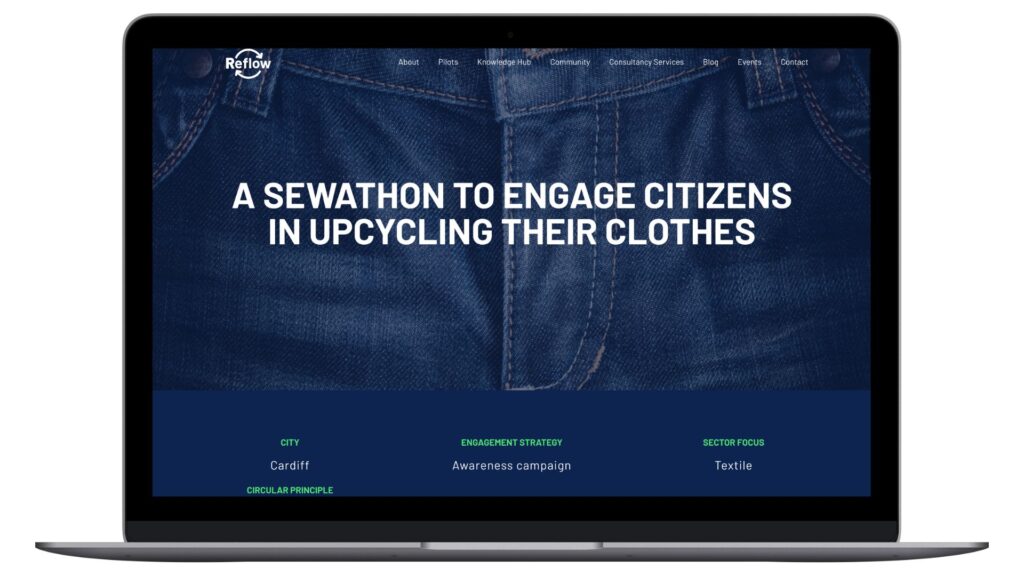
Waste hierarchy level: Avoid, Recirculate (Reuse, recycling)
As part of the #NoNewClothes challenge by remake, an organisation in the US, consumers could sign up to stop purchasing new clothes for a certain period. During this time, they could stop purchasing clothing in general or prioritise reuse and second-hand, swapping or repairing their clothes. For the duration of the challenge, remake collected data for the participants on how much water will be conserved by non-consumption. The challenge lasted from June until September 2023. While remake is headquartered in the US, the challenge operated worldwide.
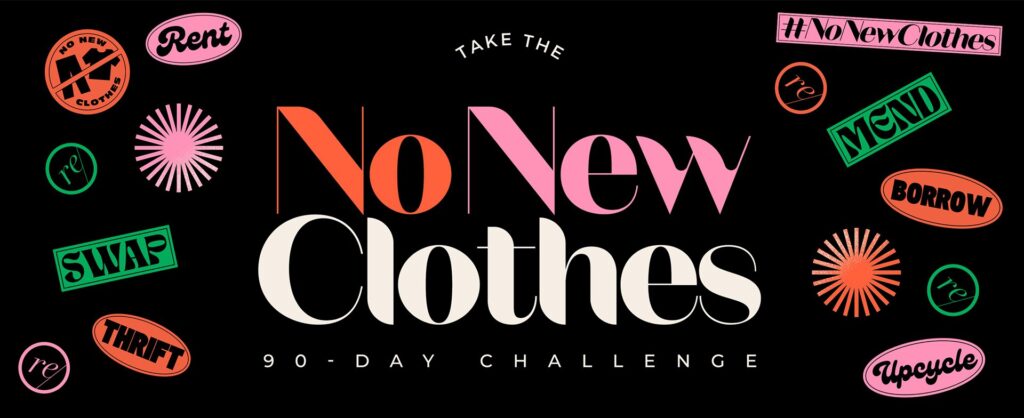
Waste hierarchy level: Avoid, Recirculate (Reuse)
“Tailors of Sustainability” is an event in Dobrich, Bulgaria, inspired by the EU campaign “ReSet the Trend” with the aim of bringing young people together and supporting them in creatively upcycling textile items. The event provided high-school students with a platform to show their upcycling projects, accompanied by educational presentations, thus raising awareness about the textile industry’s environmental impact. It encouraged the students to engage in discussions about clothing practices, consumption habits, and the role of social media.

Image: environment.ec.europa.eu
Waste hierarchy level: Avoid, Recirculate (Reuse)
This event took place in Sofia, Bulgaria and was hosted by AEGEE Sofia. “Sustainable Wardrobe for a Green Future” included a clothing swap accompanied by workshops and lectures on the topic of circular fashion. Experts included people working as part of second-hand clothing companies or sorting organisations, who shared insights into the negative impacts of fast fashion. The lectures were followed by an interactive workshop teaching participants practical skills and latest ideas on how to update their wardrobes more sustainably.
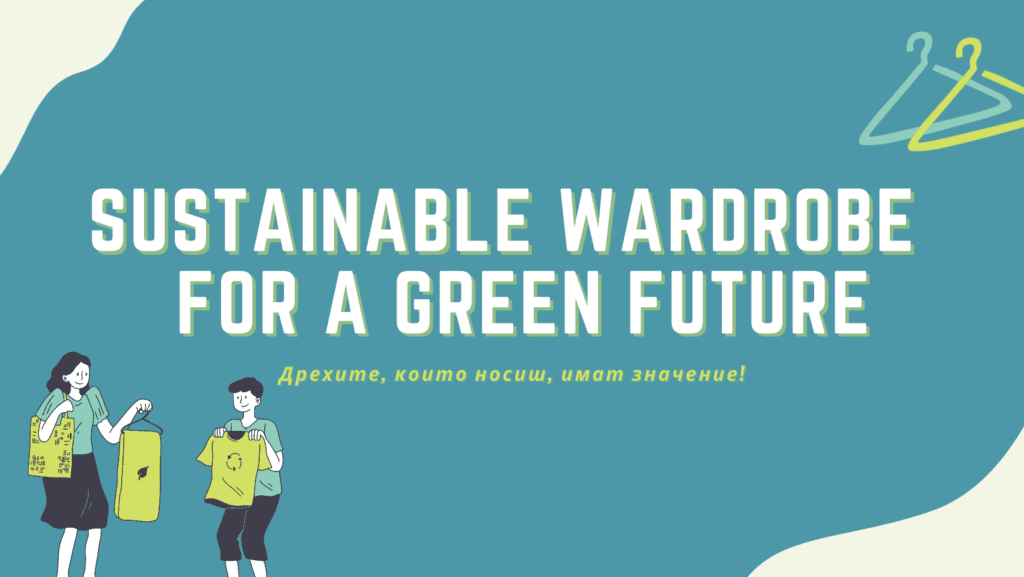
Waste hierarchy level: Avoid, Recirculate (Reuse)
F/ACT Movement is an initiative from Sweden in the Gothenburg region that focuses on educating consumers about sustainable fashion alternatives and supports companies in transitioning towards a more resource-efficient and circular fashion industry. Activities organised by F/ACT include second-hand fairs, printing designs on unwanted garments to increase their attractiveness (and with that – their use-time), or workshops aimed at making consumers appreciate the garments that are already in their wardrobe.
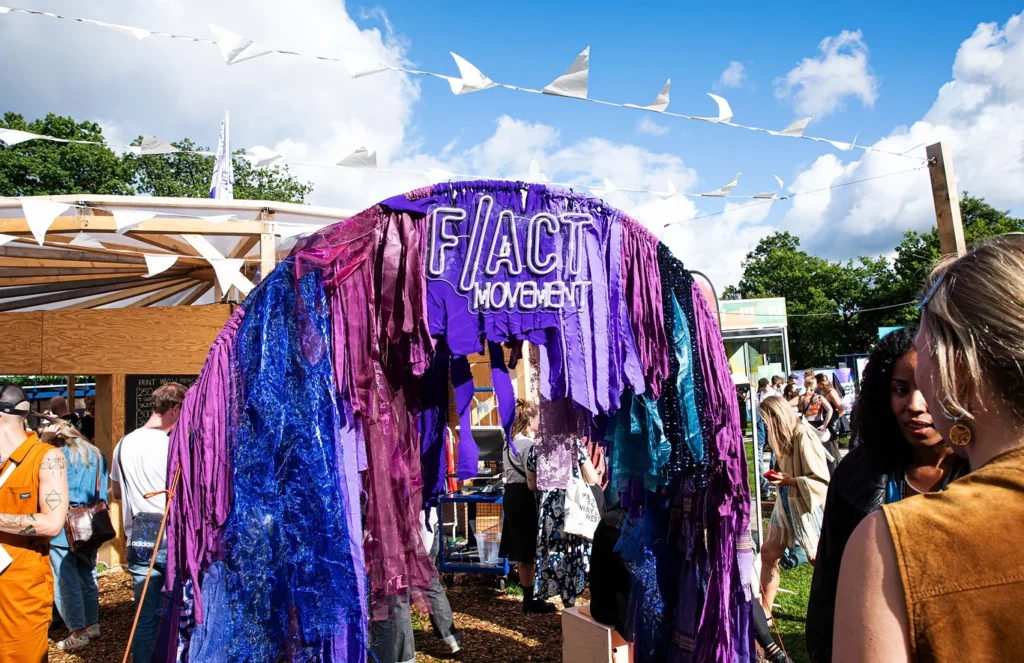
Image: F/ACT Movement
Waste hierarchy level: Avoid and Recirculate (Reduce, reuse, recycle).
JOIN Collective Clothes is a design and research project which explores fashion as a collective practice, focusing on making and wearing clothes together. In this project, everyone is invited to make a single piece of a garment. Together, the pieces crafted by various makers create a whole outfit. The essential tool of the project is an open-source modular system that consists of four different shapes: top (J), sleeve (O), trouser leg (I) or part of a skirt (N). Every shape is an addition to a growing collection of clothing-pieces that can be assembled into a variety of garments. A manual guides the maker through the process of making one of the four different shapes. Each piece, made by someone else, can easily be assembled, exchanged, and re-assembled. The possibility for everyone to join in as a maker, and then to rearrange the pieces of each outfit as a designer and wearer, playfully but critically questions the characteristics of the fashion system. If you want to JOIN from any place in the world, you can download the manual and knit pattern from this website or take part in one of the workshops.
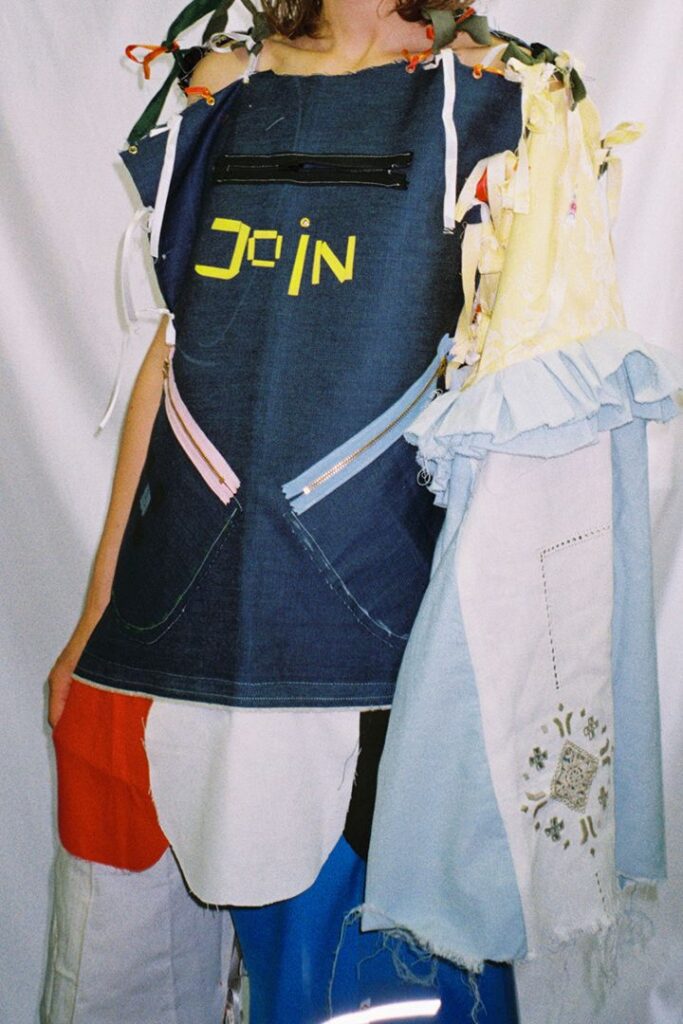
Image: JOIN Collective
Waste hierarchy level: Avoid, recirculate (Reduce, reuse).
With PORTAL, researcher, and artist Elisa van Joolen investigates the emotional, social, and economic value of clothing worn by visitors of the State of Fashion 2018 in a room-filling installation. During the first two days of the exhibition (1-2 June 2018), visitors are asked to take off a garment, make an outline of it and answer several questions regarding the production, ownership, value, and materiality of their clothes.
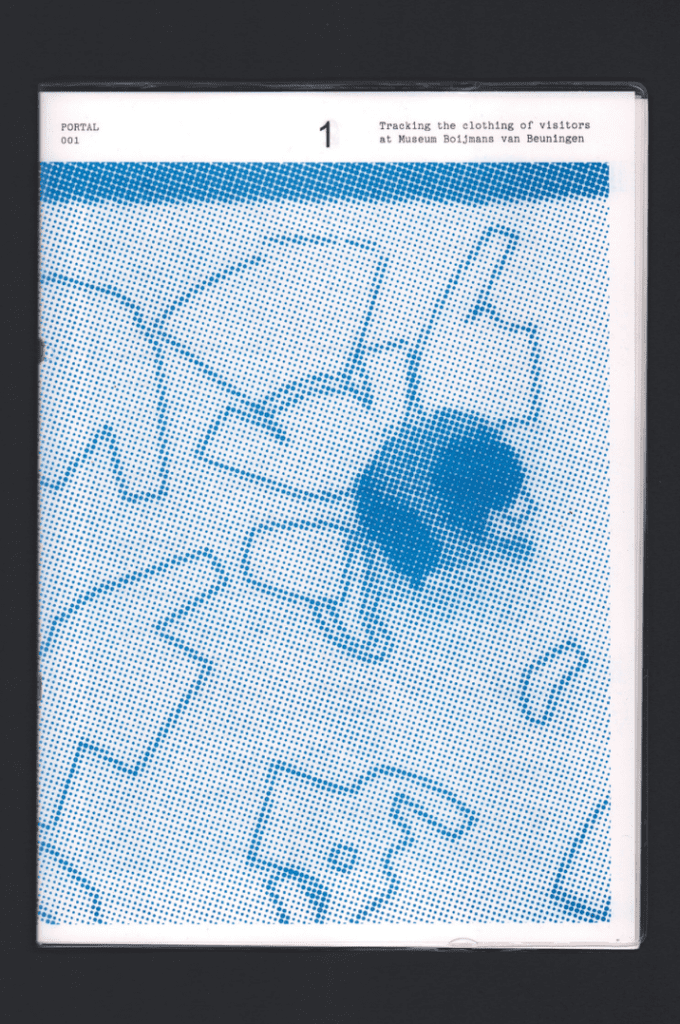
Image: PORTAL
Waste hierarchy level: Avoid, recirculate (Reduce, reuse, recycle).
Fashion Revolution was founded by Carry Somers and Orsola de Castro in the wake of the Rana Plaza disaster in 2013. They have grown to become the world’s largest fashion activism movement, mobilising citizens, brands and policymakers through research, education, and advocacy.
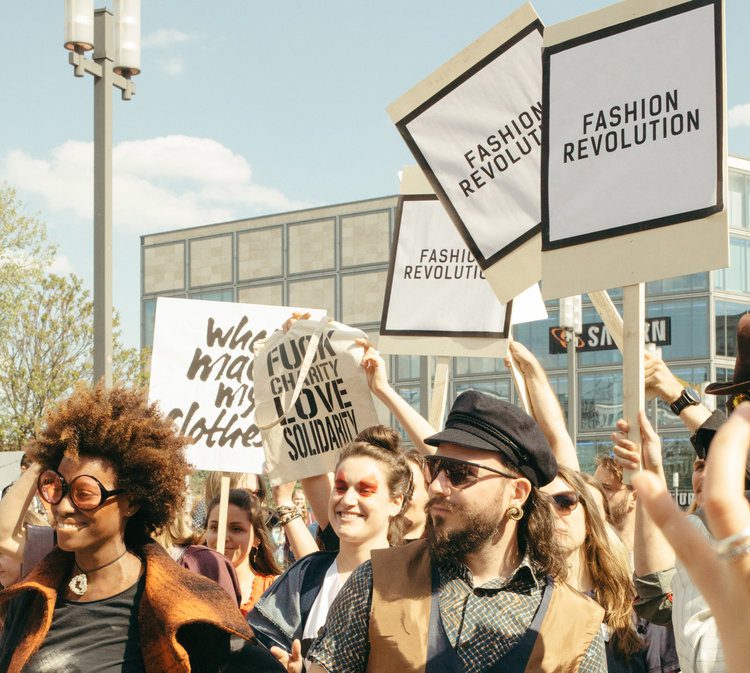
Image: Fashion Revolution Berlin